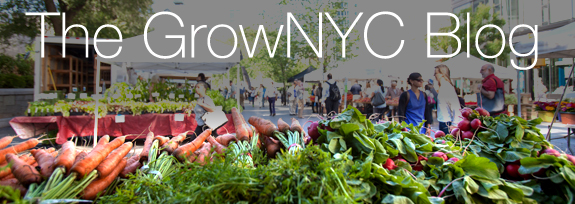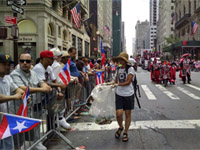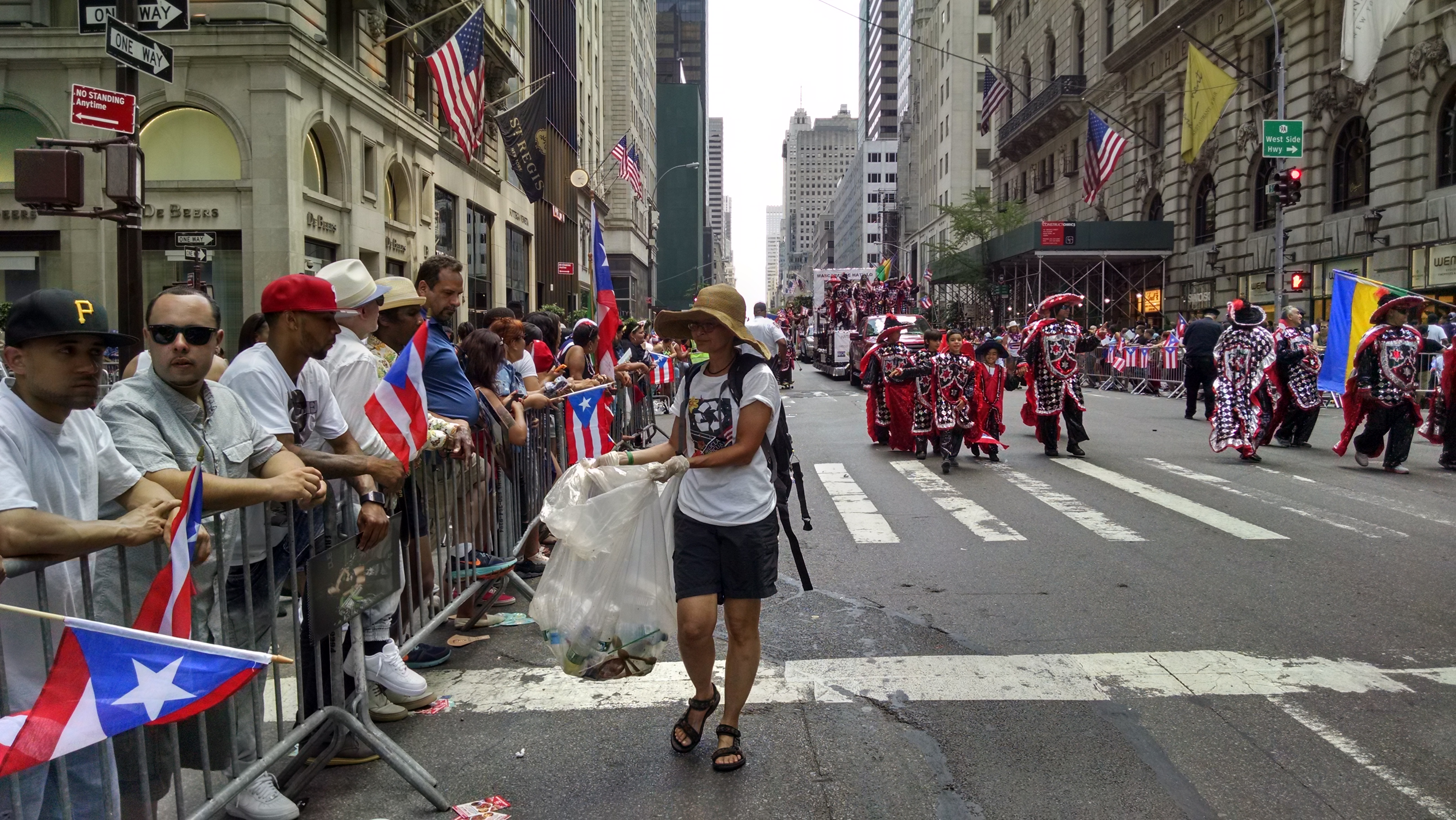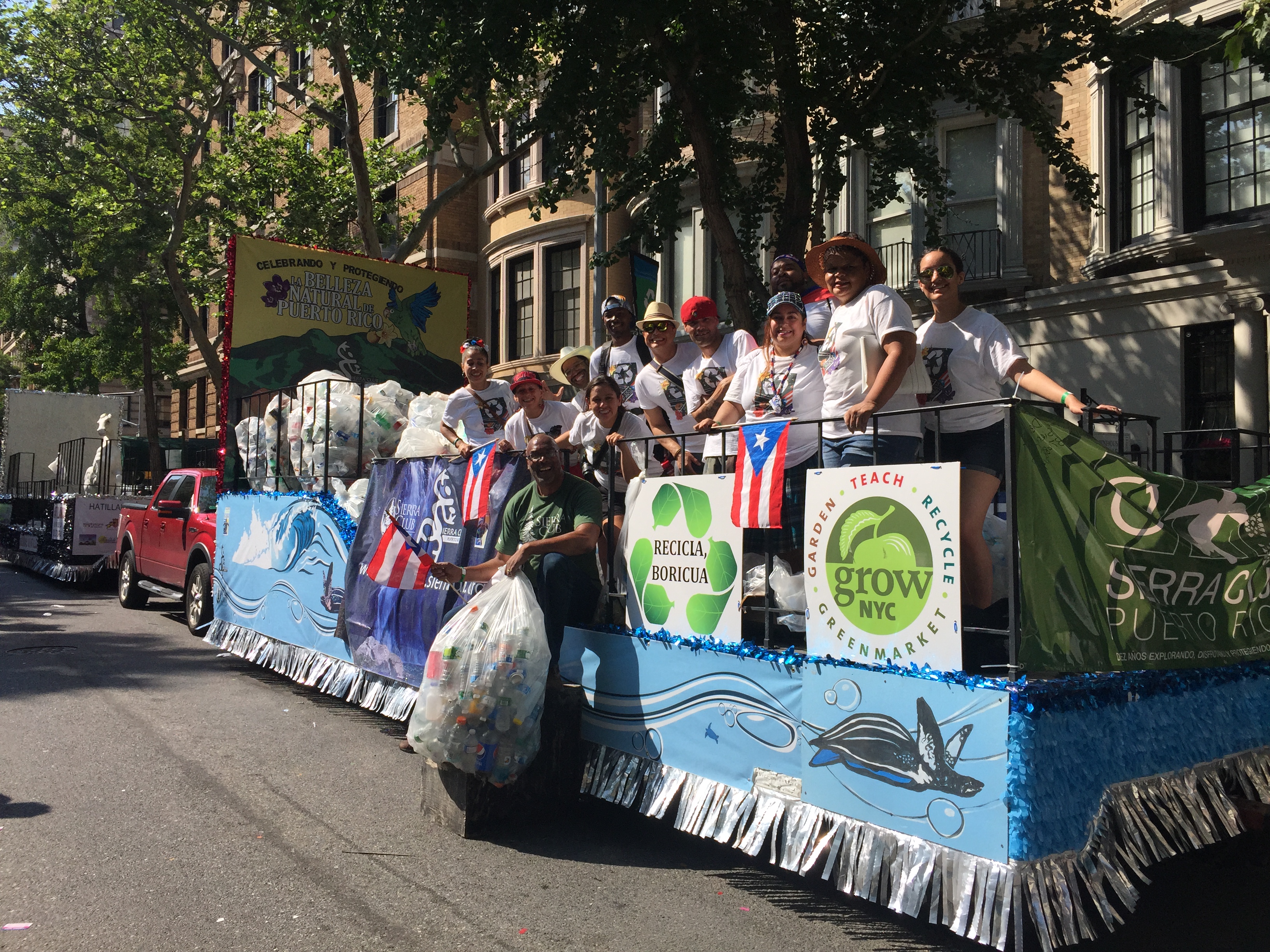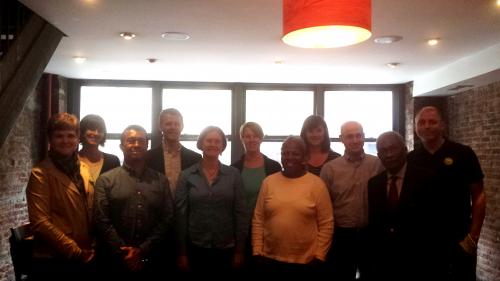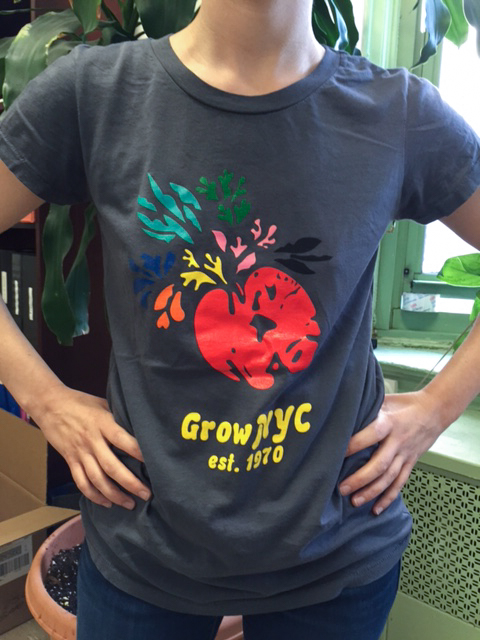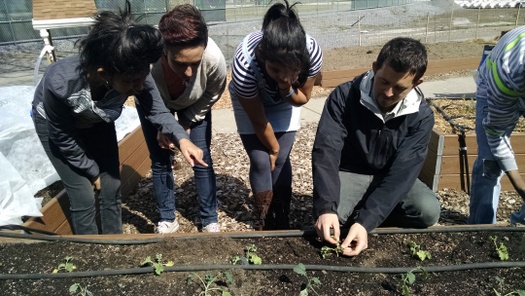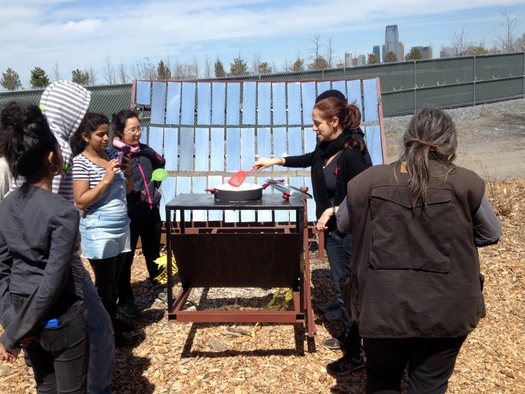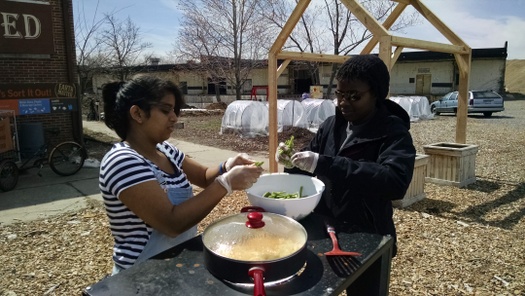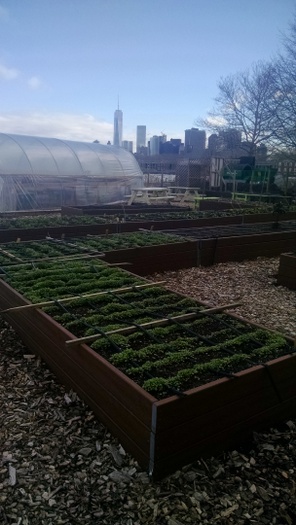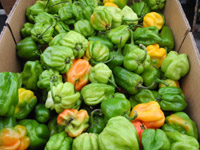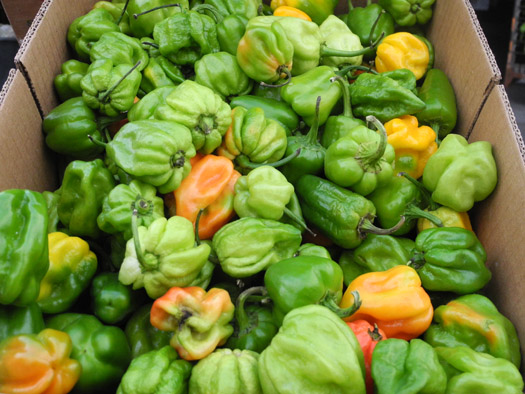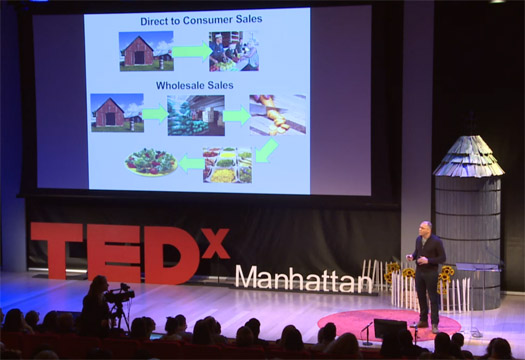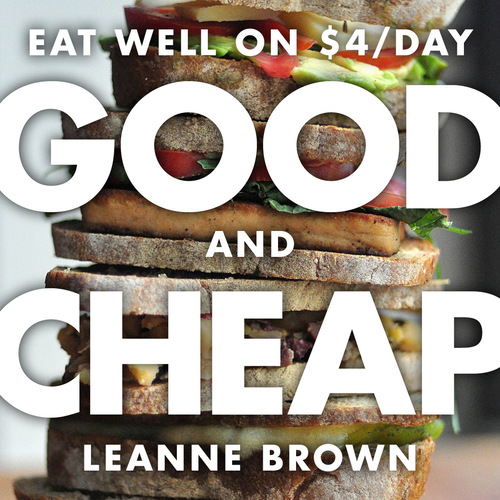
GrowNYC's Union Square Greenmarket is thrilled to be hosting cookbook author Leanne Brown for a signing of her book Good and Cheap: Eat Well on $4 a Day on Saturday, July 11 from 11 am to 1 pm. We asked the avid home cook and food-studies scholar what inspired her to write Good and Cheap and what she learned about cooking on a strict $4 a day budget, the average US food stamp budget. Even if you aren't working within a fixed food budget, Leanne's book has delicious, healthy recipes and she shared with us some great tips on how Greenmarket shoppers can get the most bang for their buck.
Why did you decide to write Good and Cheap?
Good and Cheap started as my thesis project for my Master’s in Food Studies at NYU, and I wanted it to be something that would have a life outside of academia. You know, so that more than my Mom and advisor would read it. I came into the program wanting to spread my love of cooking, and that didn’t diminish with my studies. I have always been infuriated by injustices and I became very interested in the Food Stamps (SNAP) program and was constantly frustrated that the poor don’t seem to have much of a voice in the food movement.
In short, if you don’t have much money, or you are on Food Stamps, there aren’t many resources to help you do that well. There are non-profits all across the country that are doing great work, but not everyone wants to attend a class or has time to do that. The working poor usually have two jobs and kids and not a lot of time and energy. 22% of children in America live at or below the poverty line! and 44% are classified as living in a low income household. I wanted to create a resource that was empowering, that people could use on their own time and in their own way. So I made Good and Cheap. And since it’s a cookbook for people who can’t afford a cookbook, it made perfect sense to release it online as a free pdf.
Typically, when we see recipes geared toward SNAP recipients or those cooking with limited budgets it seems that they are focused more on the quantity of food each recipe makes rather than the taste or enjoyment of eating what is prepared. In Good and Cheap, that is not the case. What was your inspiration for the recipes that made it into the book and was it challenging to make the recipes so diverse in flavor profiles while staying within the $4 limitation?
It was challenging, but just required getting into the right mindset. Most foods, even some expensive foods, are affordable some of the time, whether it’s when they’re in season or when they’re on sale. The best thing about cooking is that it is possible to have so many different things with just small changes! It’s like magic. Think about eggs! You can have french style omelettes, spanish style tortillas, bake them in tomato sauce for shakshouka, cover them in chilies, scramble them with rice or noodles. Let alone what can be done when you add sugar to the equation and enter the dessert world. There is so much that CAN be done on $4 a day and while you might eat pb&j some days, other days you can have jambalaya.
You’re absolutely right though. The Good and Cheap perspective is about being careful about the bottom line and focusing on value for money rather than pure quantity. I think that the focus on quantity is a mistake that many budget cookbooks have made. People don’t stop having taste just because they are poor! And no one is going to choose to eat in a way that requires work and planning if it doesn’t have the pay off of tasting great and being satisfying! That’s why I say to buy real butter. It costs a little more than cheap oil, but it adds flavor, and you won’t have to use as much.
What are your top tips for a family that is eating on a very limited budget? Any resources they might find helpful in planning their shopping or meals?
1. Buy foods that can be used in multiple meals. If you love black beans and have 6 recipes that you love that use them, buy ‘em! If you can only think of one way you like them prepared then skip them. For me things I always buy and know I’ll always use are eggs, greens, dried beans and grains, cans of tomatoes and dried pasta. Some will keep forever and I know I’ll use them, and some I eat daily. Figure out what works best for you and your family.
2. Buy in bulk. It’s just basic economics that buying in larger quantities often means better value. But remember to think about the #1 tip and only buy the stuff you will actually use and enjoy!
3. Start building a pantry slowly. If possible—and admittedly this can be difficult for people living on their own—reserve part of your budget to buy one or two semi-expensive pantry items each week. Things like olive oil, soy sauce, and spices (p. 166) are pricey at first, but if you use just a little with each recipe, they go a long way.
4. Think weekly/monthly and think seasonally. Eating well on a small budget generally means buying just a few things and making a few different things out of them. This can seem monotonous, but if you switch up your staples from week to week and month to month, following the seasons, and eating what is cheap, fresh and delicious you will have a varied and exciting diet!
5. More vegetables means more flavor and variety. Put the vegetables and fruits at the top of your list and prioritize them. Yes they are healthy, but they also make meals worth getting excited over! Who wants to eat a big plate of brown?
6. Don’t buy drinks. Simple as that. Prepared drinks are a waste of money. Water is all you need and if you want something else as a treat many drinks can be easily prepared at home.
Cooking Matters, a program of Share our Stength has all kinds of great advice online for eating well on a budget. Also check out stretchrecipes.com where my friend Lauren is designing an app that will help match your budget with a recipes and a meal plan, all using local market data.
What are some tips for Greenmarket shoppers on how to make the most of their dollars at the market?
My tips for farmers market shopping are very similar to those at a regular grocery store. Buy foods that you can use in multiple meals, and if you don’t have much to spend then focus on buying fruits and vegetables, and items in their most raw state rather than prepared foods, some of which can be quite pricy. Buy the local flour rather than the local bread, and the big bunch of carrots and mustard greens rather than the perfectly picked over blends of exotic greens. Those things are marvelous, but tough to fit into a small budget, and you can make great stuff out of your raw ingredients at home.
Another thing, ask the farmer or stand attendant what the best deal is. Just say that you’re trying to save money or don’t have much to spend and you want to make the most of it. Most of them will give great advice! Remember, the farmers aren’t rich themselves so they will know what they would spend on if they were in your position. Take a chance and be open with them and you’ll probably get great advice. Plus if you go often you can establish a relationship and make sure you’re getting the best deals on the best stuff.
What is up next for you and Good and Cheap? Will you keep putting out new recipes or write additional books?
Well I do plan to write another book, but I’m not sure quite what it’ll be yet. I’m lucky to have the opportunity to talk to so many different people all around the country and I plan to do a lot of listening.
The Good and Cheap project has taken on a life of its own and I want to help shepherd it and expand it. In comparison to the scale I’m currently looking at, the appetite for information on how to use limited funds wisely is almost limitless. I want to share more recipes, I hope that leaders in the food world will join with me to share recipes and tips for people with limited incomes. I want all the non-profits using Good and Cheap in their programs to be connected to each other and benefiting from each others experiences.
I have a lot of big dreams so we’ll see what happens. I’d love to see Good and Cheap, or something like it, distributed with every EBT card. I’d like to see cooking and food shopping taught in schools and made mandatory. I’d like to see classes of kids cooking and sharing lunch together one day a week. I’d love to start a community-kitchen program, like a cooking library where people can borrow equipment and use the space for whatever they want. These kinds of food business incubators already exist and should be expanded, but I’d like to see the same model for people who want to feed their families or neighbors. The same benefits a food business gets from being able to use the big mixer once a week apply to people who would love to make a big batch of fresh pasta and freeze it.
Anything else you’d like to add for those trying to watch their food budgets or even for just any home cook?
There are so many messages everywhere, from our televisions to our grocery stores, that tell us cooking is hard. But cooking is not innately difficult; it’s just a basic skill that requires practice, and the benefits of that practice are a joyful and delicious life! Compare that with packaged foods, which offer little in the way of immediate pleasure, yet cause your health and wallet to suffer in the long term, not to mention your sense of self-worth. If we can change our national attitude about cooking, we can all be a lot more satisfied with the way we eat—oh, and healthier, too. Just start cooking and don’t be hard on yourself. Let yourself be imperfect and follow your own taste, you’ll get new pleasure out of eating if you just let yourself.
Download a free copy of the cookbook, Good and Cheap:
http://www.leannebrown.com/good-and-cheap.pdf





